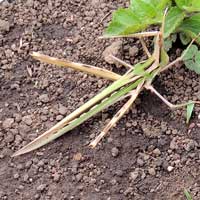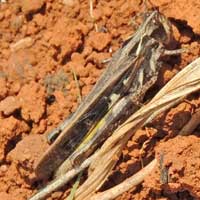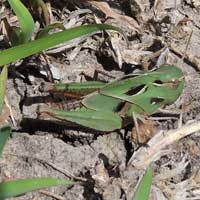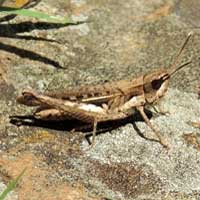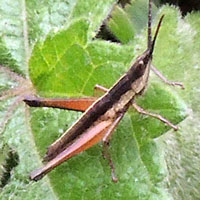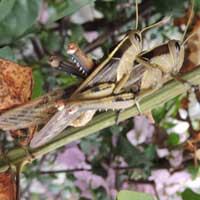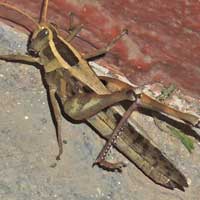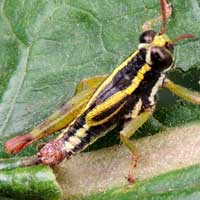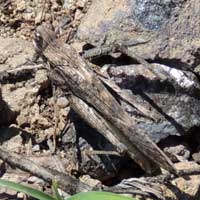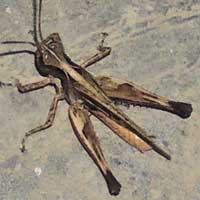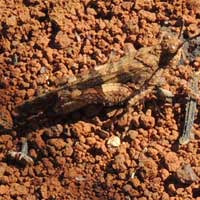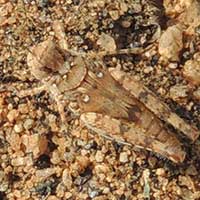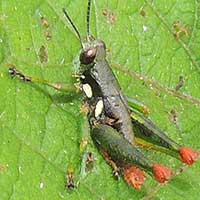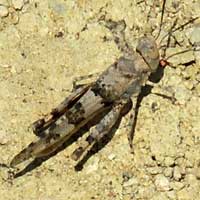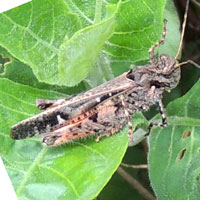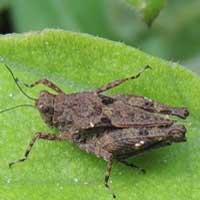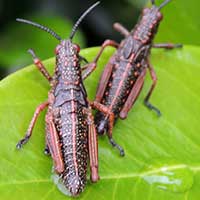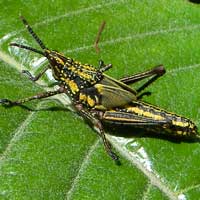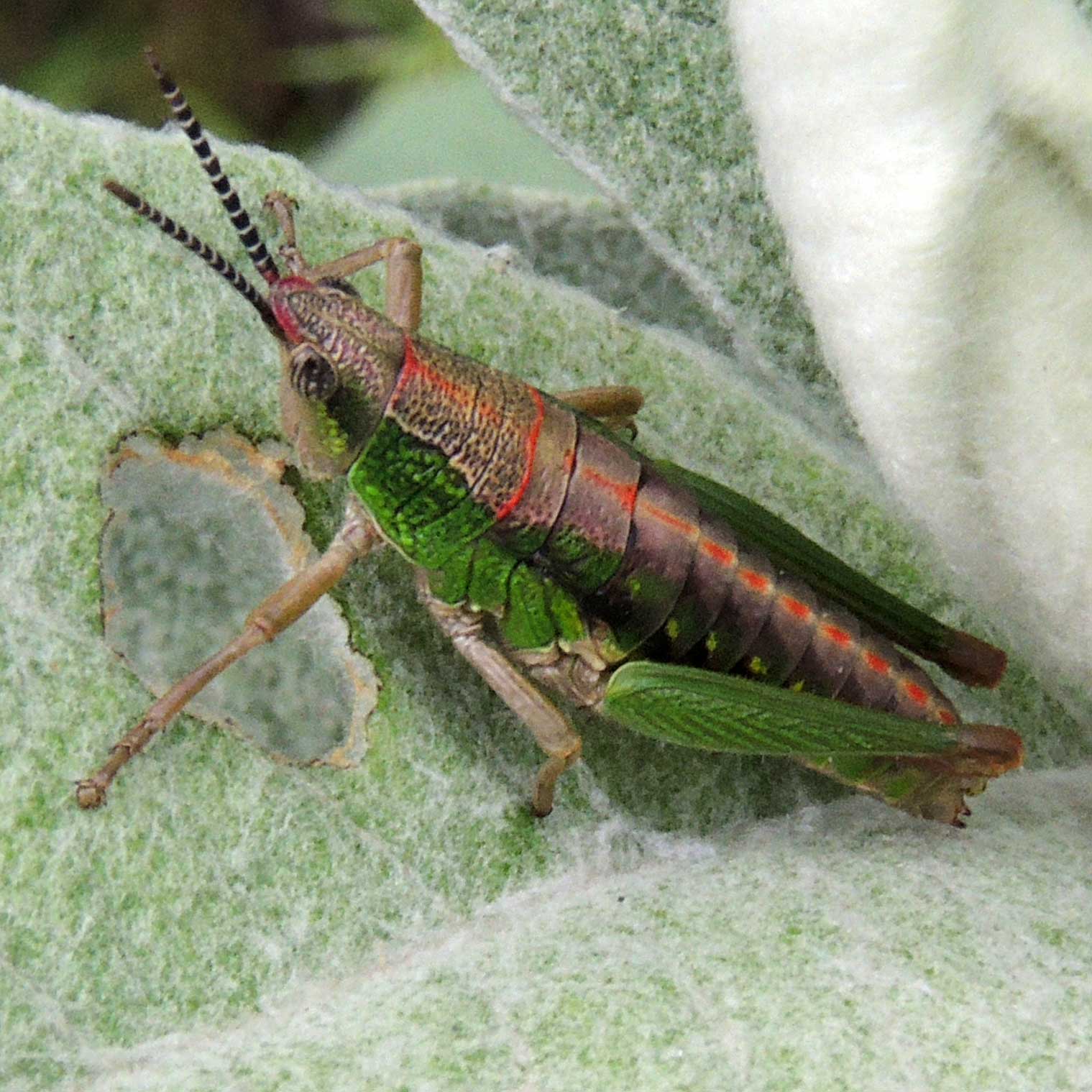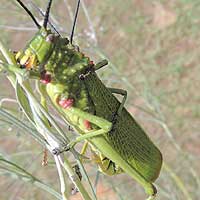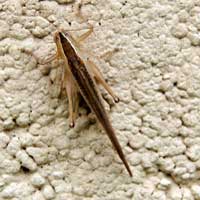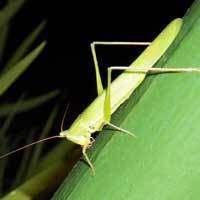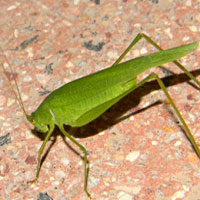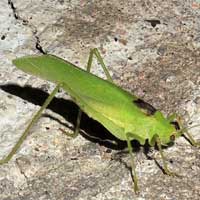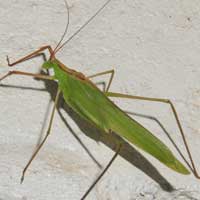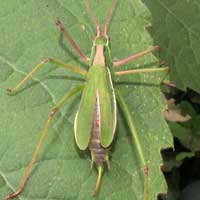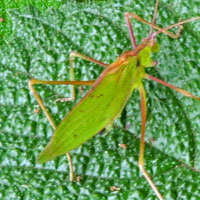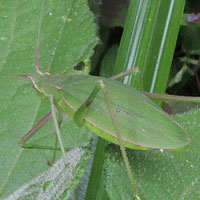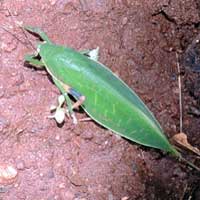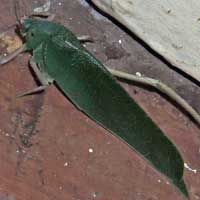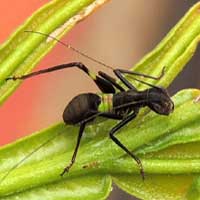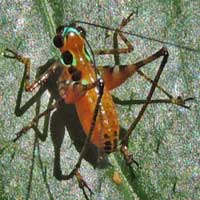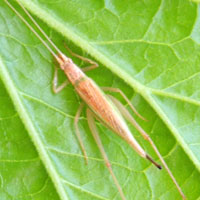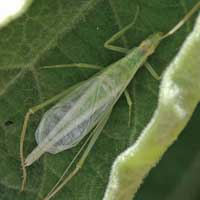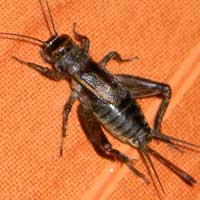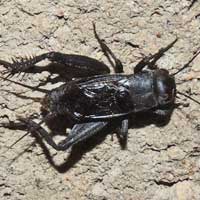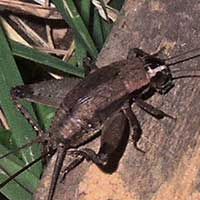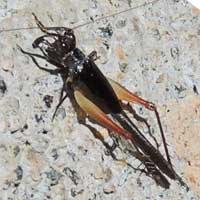Long extended head and face. Antennae flattened and wedge-shaped.
Well-camouflaged grasshopper. Inhabits areas with open soil due to farming or grazing.
Exquisitely camouflaged to inhabit grasslands on black cotton soil. This is an adult female hopper.
Handsome earthtones which hide the hopper well when it's perched on rocks or soil.
The elonged head is topped by a pair of slightly flattened antennae.
Large grasshoppers with long wings and related to the migratory Desert Locust. Dark brown stripe on prothorax.
Large grasshopper marked with light yellow-brown, dark brown and gray.
I believe this is an adult female despite the small size and short wings.
Notice the many fine stripes that serve to disguise the body and eyes. Found in open wooded savanna. The underwings are red.
Eyes? Are those eyes? Using shades of dark and light evolution has created perfect hiding patterns.
Well camouflaged grasshopper with shades of gray and brown that closely match the substrate. About 20 mm long.
Like the substrate this hopper of semi-arid country is marked by multicolored speckles resembling gravel.
How does the pattern and colors of this insect contribute to its reproductive fitness? This male is about 20 mm long.
The underwings are two-toned. This grasshopper prefers semi-arid habitats and is capable of extended, distance flights.
A raised ridge connecting the two eyes prompts my common name. Found at 2200 m. at Menangai Crater in mixed pasture-tree plantation.
A small, but fully grown grasshopper. Dark gray-brown and mottled.
A large, probably toxic (to birds) hopper. These young hoppers are gregarious. Adult is bright green.
This grasshopper was found at 2400 m in Rift Valley. Its bright colors indicate toxicity to insect-eating birds.
Gaudy grasshopper feeding on a heavily defended composite plant. Adults wingless.
Gaudy green and red grasshopper. Heavy bodied and lumbering. Ring of spines on thorax.
Sometimes called long-horned grasshoppers because of the very long antennae. Varied color from brown to green.
Usually entirely green grasshopper-like with noticeable point at anterior of head. Long wings.
Leaf like and usually difficult to see. Comes to lights at night. Long fine antennae
Once drawn from its leafy realm by artificial lights a katydid is vulnerable to predation.
Large, robust katydid from Kerio Valley. This one is clearly a male of the species.
Most katydids are compressed laterally whereas this one is dorsal- ventrally compressed.
The perimeter of the wings and legs is outlined in red. Otherwise a very leaf-like appearance.
Birds in search of a morsel of protein might not recognize this katydid as such.
Closely resembles a green leaf but can fly or jump away when the disguise is lost to a sharp-eyed bird or primate.
There are many species of trees and shrubs at Kakamega and likewise many kinds of katydid!
Birds simply don't eat ants. By natural selection many insects have evolved to look exactly like ants.
All Orthoptera pass through about 5 stages of growth, called instars, from egg to adult. The immatures are called Nymphs.
Active mostly at night, hiding under leaves by day. Long, slender antennae. Long hind legs for jumping.
Green like the foliage upon which they feed and live. Males sing by stridulation.
Field crickets of several different species are found in temperate, mesic habitats the World over.
The prominent wings of this male are the musical instrument for this night-time chorus maker.
The shorter wings and the ovipositor mark this as the female. She's silent.
This cricket has very large, prominent eyes.
